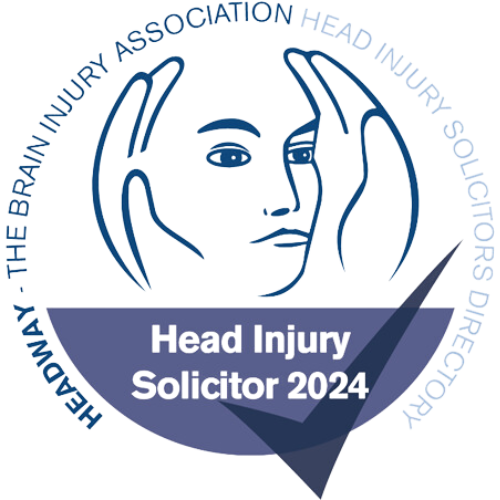Start your FREE Enquiry
How to best prevent head and brain injuries in the workplace?
20 May 2019
Action for Brain Injury Awareness week by Headway starts today. The consequences of head and brain injuries can be devastating, with those effected facing long term problems including (but not limited to) minor fatigue and dizziness to more drastic personality changes, significant cognitive impairment, to paralysis.
If staff are to acquire a head or brain injury due to negligence in the workplace, this can result in costly compensation claims and increased insurance premiums for employers. A high number of reported head injuries can also tarnish the reputation of a company if they are seen to be allowing their staff to work in dangerous conditions.
TRUE Solicitors investigates the main causes of head and brain injuries in the workplace and what action employers can take to mitigate the risks.
What is classified as a head and brain injury?
The brain injury charity Headway, explains that there are two main types of brain injury; an acquired brain injury (ABI) which is an injury caused to the brain since birth. Causes of such brain injury include, a tumour, stroke, a fall or a road accident.
The other type of brain injury is known as a traumatic brain injury (TBI), which is caused by trauma to the head resulting in a brain injury. Traumatic brain injuries are typically caused due to road traffic accidents, accidents at work or in public, or through being the victim of an assault.
Common causes of head and brain injuries in the workplace
Slips, trips and falls
Employees that work in heavy industry are typically presumed to be most likely to suffer a head or brain injury in the workplace. People in any line of work are however prone to a slip, trip or fall which could result in a head or brain injury. For example office workers could slip on a wet surface, or trip over on loose carpeting/cables and bang their head, leading to a concussion or worse.
Employees that are required to work at a height are most at risk of developing a brain injury after suffering from a fall, due to the increased impact. According to the HSE the most common causes of accidents when working at height involve roof work, as employees can fall through or off the roof, if they are not properly harnessed or if the roof is fragile.
Hit by a falling or moving object
Suffering a head injury due to being struck by a moving or falling object at work can involve a minor concussion to serious, lifelong brain injury. Workers in the following industries are most at risk of being hit by a moving object:
• Food and Drink
• Construction
• Retail
• Motor vehicle repairs
• Education workers
Lack of Personal Protection Equipment (PPE)
Personal Protection Equipment (PPE) is required by law to be supplied to employees, in order for them to be able to safely carry out their daily tasks. For example employees required to work at height or in an environment that puts them at risk of being hit by falling objects, should be provided with a hard hat to protect them from possible head and brain injury.
Inadequate Training
Employees that have not received the right training run the risk of endangering themselves and others in the workplace. Employers are required by law to train staff on how to safely use workplace equipment and machinery, as well as in how to comply with all other health and safety standards in general.
Machinery accidents
Head injuries can happen when machinery malfunctions or due to employees’ failure to properly use machinery through their own carelessness or lack of training. The Provision and Use of Work Equipment Regulations (PUWER) 1998 states that all employers must certify that all workplace machinery is in a suitable condition for its intended use, and that it is used safely by staff. It also requires that all staff that use machinery are provided with information and training.
Common causes of machinery injuries include:
• Mechanical failures
• Faulty machinery
• Absent or damaged safety guards
• Lack of training
Dangerous practices and procedures
When employees conduct themselves in a reckless manner, or when workplaces create a culture that encourages dangerous practices and procedures, accidents are more likely to happen. Common dangerous practices which can result in head and brain injuries include:
• Failure of the employer to provide PPE.
• Failure of the employer to provide appropriate training.
• Failure of the employer to provide a safe working environment.
• Failure of the employee to operate machinery in a safe manner.
• Actions demonstrated by the employee that put themselves and their colleagues in danger.
How employers can reduce the risk of head and brain injuries in the workplace
Head and brain injuries can occur in the workplace due to employees falling, mis-using equipment, being hit by a moving object and the failure to use appropriate PPE (Personal Protection Equipment). If an employee is to suffer a head or brain injury due to the negligence of their employer then the workplace is liable to be sued. In order to avoid and to reduce the risk of work-related head and brain injuries there are a number of procedures that can be put in place, including:
Provide hard hats to avoid head injury
Hard hats must be supplied to employees if there are any foreseen risk of head injuries occurring in the work place. Hard hats protect from the impact of falling objects, blows to the head, electrical shock and burns from contact with hot wires.
Improve staff awareness of hazards
One of the best methods of prevention of head and brain injuries is through making staff aware of their surroundings and existing hazards. Train staff to perform their daily tasks with caution, especially when their job involves dangerous working conditions such as having to work at a great height using cranes or ladders, in tight and confined spaces, in a place where there are constantly moving objects, or in a an environment that is susceptible to low lighting.
Implement staff training programs
Ensure that all staff are trained to operate machinery and are aware of what PPE must be worn when in use. No employee should be left to operate machinery that they have not received full training for, as it can lead to accidents involving themselves and their colleagues. Employers should also provide regular updates and training on all aspects of health and safety.
What to do if you have suffered from a head or brain injury?
If you, or a loved one, has suffered from a head or brain injury in the workplace it is essential to seek medical attention and report this to the health and safety officer as soon as possible. If you would like to seek compensation for a head or brain injury sustained due to the negligence of your employer, the money would go towards covering the cost of medical bills, loss of earnings, future care and rehabilitation costs. TRUE Solicitors LLP are dedicated solicitors for Headway and The Brain Injury Group in the North East.
Speak to one of our expert head and brain injury specialist solicitors today, for a completely free, no obligation assessment of your case.




